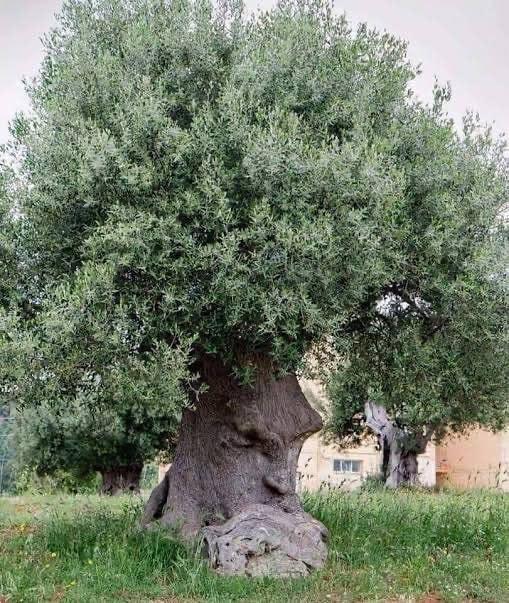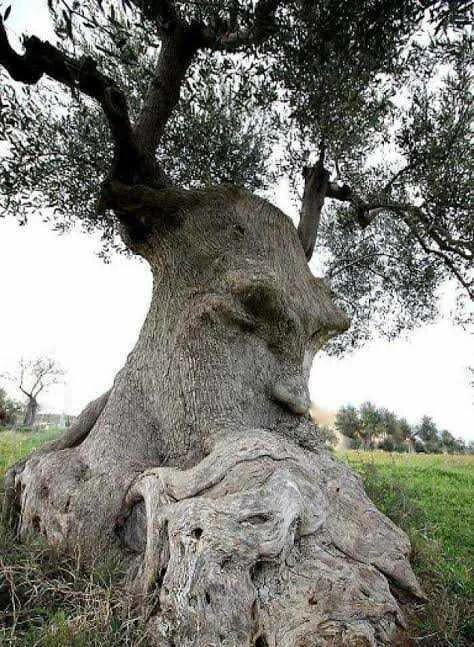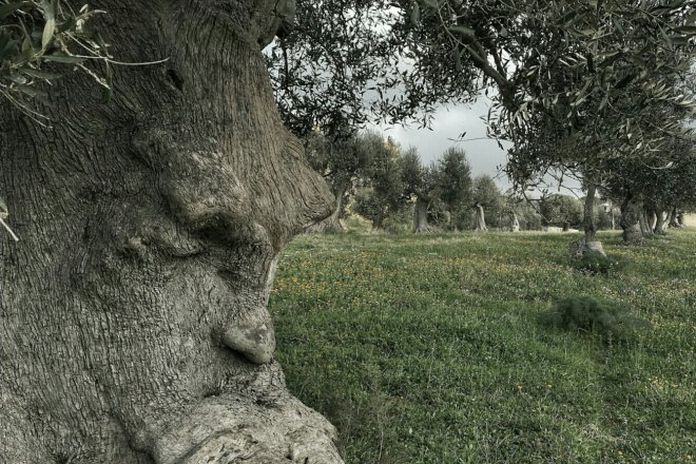Deep in the heart of Puglia, Italy, stands a living testament to time, resilience, and human history—the ancient olive tree of Ginosa. This extraordinary tree, believed to be at least 1500 years old, has been affectionately named the “Tree of Thoughts” by locals, a reflection of its deeply rooted presence in the lives of generations who have sought shade, solace, and inspiration beneath its sprawling branches.

Olive trees have long been symbols of endurance and peace, and this particular tree exemplifies the sheer strength of nature. Over centuries, it has withstood wars, shifting civilizations, and dramatic climate changes, yet it continues to thrive, producing olives as it has for over a millennium. Its gnarled trunk, sculpted by time and the elements, tells a silent story—one that has captivated historians, botanists, and visitors alike.
The “Tree of Thoughts” is not just a botanical wonder but a cultural and spiritual landmark. For centuries, people have gathered under its vast canopy to share stories, reflect on their lives, and seek guidance. Some believe that the tree carries the wisdom of the past, absorbing the thoughts of those who sit beneath it. It has become a symbol of continuity, linking past and present in a region where tradition is deeply cherished.
Ginosa, a picturesque town in Puglia, is known for its stunning landscapes, historic sites, and rich agricultural traditions. Olive trees are a defining feature of this region, where olive oil production has been a way of life for countless generations. The age of this particular tree makes it one of the most remarkable living relics of the area, drawing visitors who wish to experience its timeless beauty and pay homage to nature’s resilience.

Scientific studies of ancient olive trees like this one have revealed fascinating insights into their longevity. Unlike many other species, olive trees have an extraordinary ability to regenerate, even after being damaged by harsh weather conditions or human activity. Their deep root systems allow them to survive in poor soil conditions, making them some of the oldest living trees on Earth. This ability to endure has made them sacred in many cultures, representing wisdom, hope, and renewal.
The tree is also an ecological treasure. With its expansive root system, it plays a crucial role in preventing soil erosion and maintaining the delicate balance of the surrounding environment. Its presence supports a wide variety of wildlife, from insects to birds, creating a miniature ecosystem within its ancient embrace. The centuries-old process of photosynthesis within its leaves contributes to the region’s air quality, reminding us of the invaluable role that trees play in sustaining life on Earth.

As modern society continues to evolve at a rapid pace, trees like the “Tree of Thoughts” remind us of the importance of preservation and respect for nature. They stand as quiet witnesses to history, offering a sense of connection to something greater than ourselves. Locals and conservationists work hard to protect such ancient specimens, ensuring that future generations will be able to marvel at their beauty and significance.
For those who visit Ginosa, standing before this magnificent tree is a humbling experience. To touch its weathered bark is to connect with centuries of human and natural history. It is a place where time slows down, where the whispers of the past blend with the quiet rustling of the leaves, and where thoughts seem to take root alongside its ancient roots.
This tree has also inspired artists, poets, and thinkers throughout the years. Many believe that simply sitting beneath its canopy encourages deep introspection and creative thought. Some locals even tell stories of travelers who arrived in Ginosa burdened by worries and left with newfound clarity after spending time near the tree. Whether one believes in the mystical power of the “Tree of Thoughts” or not, there is no denying the serenity it provides to those who pause and take in its presence.

In an era where technology often distracts us from the natural world, the “Tree of Thoughts” serves as a reminder of the enduring power of nature, of stories passed down through generations, and of the wisdom that comes from slowing down and listening. It is more than just a tree—it is a living legend, an icon of resilience, and a source of inspiration for all who encounter it.
Preserving such ancient natural wonders is not only a responsibility but a privilege. As climate change and deforestation threaten our planet’s oldest trees, it is crucial to recognize their importance and take active steps toward their protection. Initiatives to safeguard ancient olive trees, particularly in Mediterranean regions like Puglia, are gaining momentum, with conservationists advocating for their recognition as cultural and environmental treasures.
The “Tree of Thoughts” in Ginosa is a profound symbol of history, strength, and continuity. It bridges the past with the present, reminding us that some of the greatest lessons can be learned not from books or screens, but from the silent wisdom of nature itself. Whether one visits to marvel at its age, to seek peace under its shade, or to simply appreciate the beauty of an ancient survivor, this remarkable tree stands as an enduring beacon of life’s resilience.




